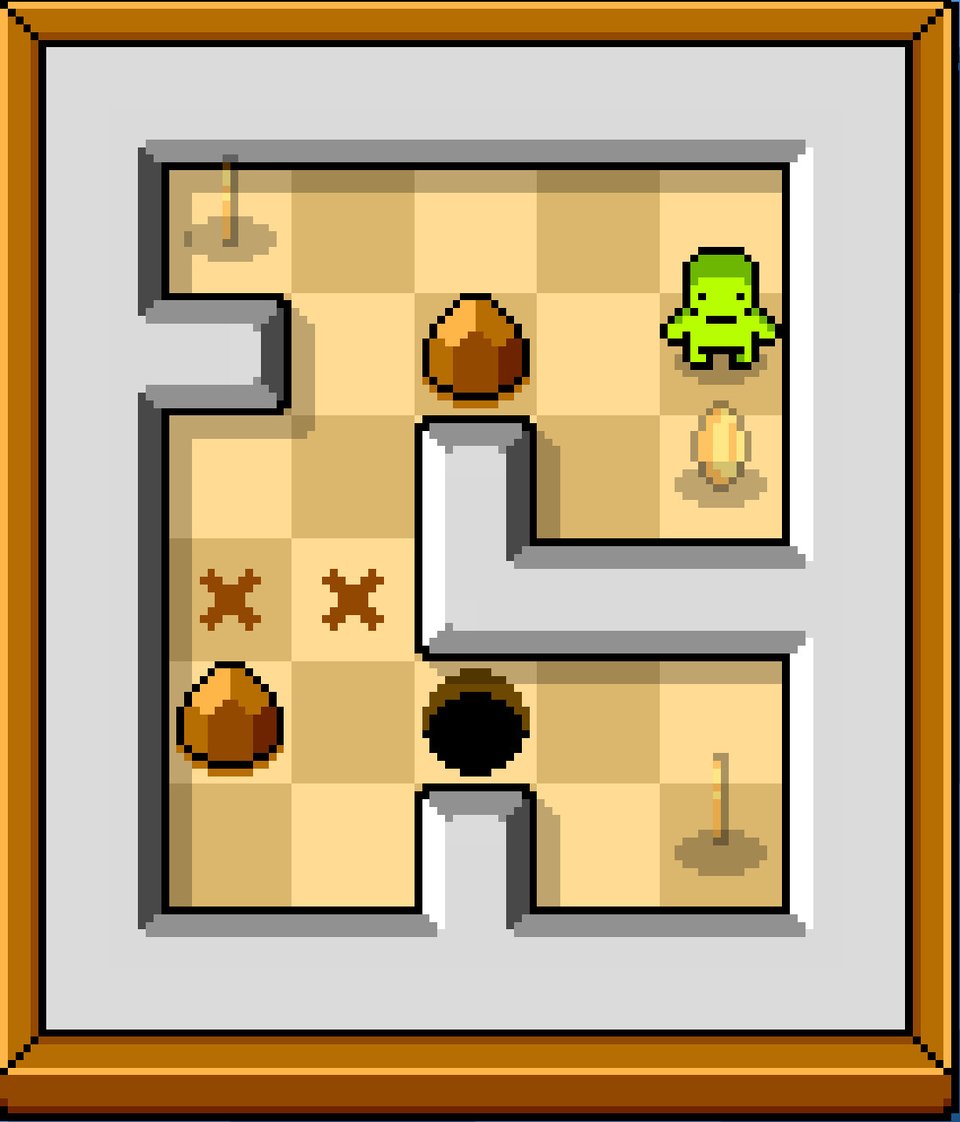Linkfest #34: Neanderthal Sunscreen, Triskaidekaphobia, and a Self-Zippering Zipper
Hello folks!
It’s time for "the opposite of doomscrolling” — my next “Linkfest”, in which I sift through the contents of the entire known Internet to extract gleaming geodes of science, culture and technology.
If you’re a subscriber, thank you! If not, you can sign up here — it’s a Guardian-style, pay-whatevs-you-want affair; the folks who kick in help keep the Linkfest free for everyone else.
Please share this email with anyone who'd enjoy it!
Let’s begin ...
1) 🛝 “Wired Scape” playground in Guangzhou

When I first saw the photos of this playground, I had to check that it was real — it looked like a CGI mockup or something.
But nope, the firm 100 Architects actually built this thing in Guangzhou. As they describe the “Wired Scape” …
Drawing inspiration from Guangzhou’s diverse natural environments, the design interprets two fundamental elements—Forest and Flowing Water—through abstract geometries and sculptural forms. The result is a forest-like playscape where every element appears as if spun from wires, wrapping around trees to form highly tactile, richly textured volumes.
The most iconic feature is the group of four sculptural “trees” at the heart of the playscape. These climbable structures are formed by pipes that spiral around central cores, resembling woven orbs. They serve both as vertical play elements and shaded canopies, interconnected by hanging bridges that invite exploration and imaginative play across different levels.
At the ground level, it almost looks like a level from a Super Mario World game …

I do wonder, though, how those materials will age? Those gorgeously saturated colors might start to become a little drab after a couple of years in the sun and rain. Though I figure/hope the designers took that into account when they picked the materials …
Plenty more photos at the 100 Architects site, check it out!
2) 🎶 Music performed by brain cells grown from dead composer

Alvin Lucier was a famous experimental musician who was 90 years old when he died in 2021.
But he’s still making new music — because some of his neurons have been kept alive, and are wired up to a set of instruments.
It’s an art project called “Revivification”, and Lucier started work on it before he died. He collaborated with a team that took a blood sample and used it to create neural-like structures for a musical installation.
As Rosamund Brennan writes in The Guardian …
The Revivification team used custom technology to bring the work to life. Lucier’s organoids were grown on to a fine mesh of 64 electrodes, developed with a German bioengineer, allowing neural signals to be captured from multiple layers – much like a developing brain. Gingold then adapted an open-source platform to interpret this activity and generate sound, turning the artificial brain into a live, responsive performer.
Both sculptural and sonic, the installation features 20 large parabolic brass plates which curve out from the walls like golden satellite dishes. Hidden behind each plate is a transducer (like a speaker) and a mallet, which respond to neural signals from the mini-brain – filling the space with a kind of breathless, disembodied soundtrack. [snip]
Importantly, Lucier’s organoids don’t just produce sound – they also receive it. Microphones in the gallery pick up ambient noise, including human voices and the resonant tones of the plates, and that audio data is converted into electrical signals and fed back into the brain. “We’re very interested to know whether the organoid is going to change or learn over time,” Ben-Ary says.
Alas, I can’t find any clips of what the project sounds like! I really hope someone puts some online …
3) 🤐 Self-zippering zipper

YKK Japan has created an ingenious device — a self-zippering zipper.
If you watch the video above you can see it in action. It’s got a little internal worm-gear that rotates and, in doing so, ascends the zipper and attaches its teeth together. The Verge has a short story on it here.
Because the device needs to be bulky enough to contain a motor and a battery, it appears — for now — to be slated for industrial applications. In that video they’re using it to zip and unzip the vinyl covering of a work site.
But it’d be fascinating if they could reduce the components to be much smaller and clothing-sized. Would that be possible? You could shrink the motor and screw quite a lot, I’d suspect; the harder part would be the battery, because making a truly teensy battery that carries enough useful juice is nontrivial. Maybe, instead, you could power the motor remotely — i.e. via power-wires sewn into the clothing, or via the metal of the zipper itself? Now you’ve got an electrocution risk built into your jacket, lol.
A fun engineering challenge, either way …
4) 🎨 A new color

Apparently scientists have discovered a new color!
And they did it by firing lasers into the “M” cones of their own eyes.
It works like this: To perceive color, our eyes have three types of cones — L, M, and S. Everyday red light mostly stimulates the L cones, and blue light mostly pings the S cones. The M cones don’t have a natural light that excites only them.
So the researchers wondered — huh, if we stimulated M cones directly with a laser keyed to its wavelengths, what would we see?
They experimented on themselves, and they claim to have seen a color never before perceived. They’re calling it “olo”.
Their description of the colour is not too arresting – the five people who have seen it call it blue-green – but that, they say, does not fully capture the richness of the experience.
“We predicted from the beginning that it would look like an unprecedented colour signal but we didn’t know what the brain would do with it,” said Ren Ng, an electrical engineer at the University of California, Berkeley. “It was jaw-dropping. It’s incredibly saturated.”
They shared the color sample you see above, saying that it’s the closest they can find to Olo. But …
“There is no way to convey that colour in an article or on a monitor,” said Austin Roorda, a vision scientist on the team. “The whole point is that this is not the colour we see, it’s just not. The colour we see is a version of it, but it absolutely pales by comparison with the experience of olo.”
The way these scientists describe olo has a kind of stoned dorm-room quality to it: Bro, it’s like a whole new dimennnnnnsion. As a result, other scientists are bemusedly pushing back: It’s just a saturated green, it’s not a new color!
Still, it makes me interested to see it myself. And it evokes all the philosophical question about perception and whether language — or jpegs like the one above — are ever adequate to externalized our intense, highly internal qualia.
The original paper is here, unpaywalled.
5) 😎 Maybe Neanderthals died out because they didn’t have sunscreen

About 41,000 years ago, the earth’s magnetic poles shifted from their normal geography, an event that lasted some two thousand years.
It made life on Earth pretty dire, because the magnetic shield that protects the earth from cosmic radiation was reduced to only 10 percent of its usual strength.
A new scientific paper suggests that this might be part of why the Neanderthals died out!
As the paper — “Wandering of the auroral oval 41,000 years ago” — notes, it’s around this time that “anatomically modern humans” (AMH), our ancient predecessors, began to use ochre as bodypaint. The scholars speculate that AMH did this precisely because it functioned as a form of sunscreen. It thus helped AMH survive … and eventually lead to us, homo sapiens.
However, Neanderthals didn’t start using ochre — so, the scientists figure, they may have been dying more frequently from solar-radiation exposure.
“Although both Neanderthals and contemporary AMH produced technologies associated with clothing manufacture, only AMH appear to have produced technologies consistent with the manufacture of tailored clothing; Neanderthals are assumed to have produced only relatively simple, draped clothing (e.g., capes)...Neanderthals’ decline was almost certainly multifactorial, but it is possible that topical sunscreens and tailored clothing provided AMH essential photoprotection and access to resources in places and at times they would otherwise have been inaccessible” which may have been “a competitive advantage.”
Over at 404 Media, Becky Ferreira has a good writeup of the research, and the full original paper is here.
(BTW, Ferreira does a weekly roundup of cool science findings for 404 Media, and she hunts down amazing stuff. There are a lot of excellent reasons to subscribe to 404 Media if you can — they do fabulous coverage of tech’s intersection with politics and culture — but if you’re a science nerd, Ferreira’s weekend roundups are themselves worth the price of admission.)
6) 🕹 Video games that fit in 13K

js13KGames is an annual game-making jam in which the code of each game — and all its graphical and musical assets — must fit in 13K.
That’s … tight! It’s even less than some hit games from the early arcade period; Pac-Man, in contrast, was 24K.
Each year has a theme, and the theme for 2024 was …
Triskaidekaphobia.
The word means “fear or avoidance of the number 13”. There are plenty of ideas you might follow: escape the cursed 13th floor of an abandoned hotel, play a card game where you have to hit your opponent for 13 points or avoid having 13 cards, break a curse as a black cat while going through 13 trials, avoid 13 ghosts in a haunted mansion, escape a room in 13 minutes or 13 seconds.
The winners — and all the hundreds of entrants — are all free to play here! I dug the odd puzzle game “Ghosted” (depicted above), and “The Way of the Dodo” (a one-button action game, my ergonomic fave). I tried playing the winner, “13th Floor”, a stealth-horror game, but just got lost blundering around in the dark and couldn’t make any progress 😅 … maybe you’d have better luck?
Constraints are always an amazing spur to creativity, and 13K is a great constraint.
7) 🎹 3D printed fidget toys that play video-game melodies

Kida is a designer who has, for a while, been making these very cool musical fidget toys.
You know how you can run your fingers along the edge of a comb and it makes a plucking noise? These work like that, except kida slightly changes the length of each tooth in these comb-like devices, such that when you pluck them sequentially they play a melody.
It’s really ingenious — to get a sense of how it works, watch this short video …

kida had already issued a couple of dozen famous pop-culture melodies as fidget toys — but just now added a slew of video-game-related ones. They wrote up notes about the challenge of adapting the game melodies to the rather restricted sonic qualities of a plastic plucky device; some examples …
The Secrets of Monkey Island - Theme
This one plays the Monkey Island theme song, the part when the song becomes faster. The last note is improvised as the melody would sound cut-off without it. Quite tricky to play, with very variable tempo. But fun trying to master!
Minecraft – Minecraft
Plays the song named Minecraft from Minecraft. For this melody, I redesigned the fidget to be able to play two notes at the same time. It only has 10 notes and needs to be played slowly. Sounds better on the piano than the fidget for sure 😊 but you can not keep a piano in your pocket. For the coloured version, I attempted to make the fidget look a little like a “grass block”.
Tetris – Korobeiniki
This fidget is split into two parts, together playing the main part of the Tetris Melody (Korobeiniki). Part 1 by itself is enough, but if adding the second part you will have more fun. This one is a little tricky to play correctly, but when mastered it sounds great!
One thing that fascinates me here is that the tunes can be a little tricky to learn to play — because you have to figure out the correct pace and pressure at which the prongs will boing … and this becomes even harder if the melody itself changes speed.
So it’s a fidget toy that requires skill to master, and produces music. Love it!
8) 🥁 Rock drummers burn as much energy as competitive volleyball players

Clem Burke was the drummer for Blondie — and he also played with the Romantics and, briefly, the Ramones (as “Elvis Ramone”). He was known for being really energetic on stage, and also for gigging a lot; he did over 100 shows a year for decades. That’s him above.
His endurance attracted the attention of researchers at the Universities of Gloucestershire and Chichester, who were intrigued by the question: Precisely how much energy do rock/pop drummers expend? How metabolically intense is drumming, compared to other forms of exercise? How does drumming affect your brain function?
They formed the Clem Burke Drumming Project specifically to do scientific research into this question!
My favorite paper of theirs is “Energy Expenditure in Rock/Pop Drumming”, in which they studied 14 healthy male drummers while they played — in a lab, and also at live gigs. They tracked the drummer’s heart rates and respiratory data, and took a blood sample after each performance.
The top findings? During performances that averaged 38.6 minutes, the drummers …
had heart rates that reached an average of 166 BPM, and went as high as 185
burned an average of 623 calories per hour, and as much as 793 calories per hour
… assuming accurate calculation / citation of other physical activities, rock / pop drumming is of equal metabolic demand to; running (8 km.h-1), cycling (19 - 22 km.h-1), ice and field hockey and competitive volleyball (beach and gymnasium)
I told this info to Meredith, the drummer for my new rock power-trio band Lipstick Driver, and she confirmed: Hell yes, playing a set live is exhausting.
You can read all the papers from the Clem Burke Drumming Project right here, unpaywalled.
9) 🔥 The epic engineering of malt kilns in the 1600s

In the mid 17th century, there was a burst of incredibly clever and inventive engineering around a difficult task: Drying out the malt for beer.
Basically, “maltsters” had to soak grain to the point where it would start germinating, and then immediately dry it out. Historically you’d just lay it in the sun, but in the 1600s beer-making was becoming an economically huge industry, so they needed to dry out malt in a highly scaled fashion. Sun-drying was too slow; to dry big quantities quickly, you needed to use fire.
The problem is, if you simply put a bunch of wet grain in a pan over a fire, it absorbs the smoke and the beer goes dark and acrid.
So maltsters began a decades’-long quest to design a stove that would route the smoke around and away from the wet grain, while keeping the heat proximal.
This was … surprisingly hard to do. Anton Howes, who writes a wonderful history newsletter “Age of Invention”, has published a fascinating long essay diving into the gnarly details of several different designs.
His research was tricky at times, because folks back in the 1600s didn’t always produce images showing how their designs functioned. So Howe has to reconstruct the devices from textual descriptions in letters and articles. For example, around the 1620s there was a design called the “French kiln” that was very popular — almost too popular, because people who wrote about it assumed everyone already knew the design, so why bother describing it?
In a book probably written around the same time, but published a decade later,15 is a note about some kind of smokeless malt kiln becoming popular: “there is a kiln now of general use in this kingdom, which is called a French Kiln … ever safe and secure from fire, and whether the maltster wake or sleep … and in these kilns may be burnt any kind of fuel whatsoever, and neither shall the smoke offend or breed ill taste in the malt, nor yet discolour it, as many times it does in open kilns, where the malt is as it were covered all over and even parboiled in smoke”.16
What’s frustrating here is that the French Kiln was apparently too popular to even bother describing: “of the form or model whereof I will not here stand to entreat, because they are now so generally frequent among us, that not a mason or carpenter in the whole Kingdom but can build the same, so that to use more words thereof were tediousness to little purpose.” Argh! Will nobody think of the historians?
Lol. Above is Howe’s attempt to draw what a French kiln might have looked like. In his essay, he also illustrates three other styles of kiln that maltsters employed, showing their gradual evolution towards a final, enduring design. It’s fun to read the essay and see if you can predict the solution the maltsters finally settled upon.
Howe’s newsletter is really worth subscribing to, BTW. He only publishes occasionally, but each one is a deep dive into history just like this one.
10) ☀️ Pakistan’s solar revolution

Last year, Pakistan imported 22 gigawatts of solar panels. How much is that?
Holy crap it’s a lot! It’s more than the UK has added in the last five years, and more than Canada has installed in total. Pakistan is now, as Michael Barnard writes in Clean Technica, in the “top tier” of countries building out solar.
How did this happen? As Barnard notes, part of what made Pakistani citizens ripe for solar is that for decades they endured crappy governance that mismanaged energy — so when solar came along, it seemed more reliable than the regular grid …
For years, Pakistan’s grid was a source of national frustration—rolling blackouts, wild tariff swings, and a chronic overreliance on imported fossil fuels. The tipping point came when utility-scale and industrial solar started making simple economic sense. With Chinese panel prices crashing through the floor and diesel generator costs spiraling out of control, even small business owners started doing the math. The answer was always the same: buy solar. Add batteries if you can afford them. Cut the grid loose.
In 2024, that decision calculus went mainstream. Import records show 22 gigawatts worth of modules flooding into the country, with many going to private-sector installations behind the meter. Warehouses, textile mills, farms—anything with a flat roof and a balance sheet. The government barely needed to nudge the market. It just removed tariffs, approved net metering, and got out of the way. Good governance.
On top of that, mobility is rapidly electrifying — particularly in the choice category of small two- and three-wheelers …
The real action is happening closer to the ground, where indigenous startups are rolling out electric two- and three-wheelers at a pace that could reshape urban mobility. Companies like Jolta Electric and Vlektra are assembling locally made e-motorcycles that target the country’s massive base of two-wheeler users—millions of whom rely on scooters and bikes for daily transport. With soaring petrol prices and worsening air quality in cities like Lahore and Karachi, these electric alternatives are fast becoming the obvious choice. The economics are simple: lower fuel costs, less maintenance, and in many cases, the ability to charge with rooftop solar.
Fascinating piece. I’ve not read anything about Pakistan’s rollout of cleaner energy, but now I want to hunt down more coverage; here’s a good piece in Nikkei Asia.
11) 🐭 Origami folding computer mouse

Behold the OrigamiSwift Mouse, which lies flat until you fold it together with one simple movement — upon which it snaps rigidly into its form and automatically powers on. Cool video showing it in action here.
I love origami in general, having laboriously taught myself the craft after encountering Robert Harbin’s fantastic Origami 3 in my elementary-school library in 1979. (Though why o why did the librarian only buy number 3, the much-harder sequel to Harbin’s intro-for-beginners 1 and 2? Oh well.) Anyway, I love seeing origami’s elegant logic employed in industrial design. Bonus points for the design of the mouse in its flat form: It looks like a cicada.
Also, the idea of a mouse that can be carried flat in a bag, purse or pocket is not just clever but ergonomically useful; full-sized computer mice are uncomfortably bulgy things to heft around. Flat == comfy.
It also makes me wonder, now — casting an eye around my workspace — what other tech objects would be more conveniently carried around flat and then folded into their final forms? FLATTEN ALL THE THINGS
12) 🧮 Dealing infinite damage in Magic due to twin primes

Okay, this next item is super nerdy, but incredibly interesting. Bear with me and you’ll dig it.
You know the card game Magic: The Gathering? In the game, players attack each other using cards for magic spells, creatures, or resources. One key resource is “land”, which generates the mana you need to cast spells. The more land you have, the more spells you can cast.
The company that makes Magic regularly issues new cards with new abilities. Last September, they issued a card called “Zimone, All-Questioning” (pictured above), the abilities of which hinge on … prime numbers.
Here’s the text on the card:
“At the beginning of your end step, if a land entered the battlefield under your control this turn and you control a prime number of lands, create Primo, the Indivisible, a legendary 0/0 green and blue Fractal creature token, then put that many +1/+1 counters on it. (2, 3, 5, 7, 11, 13, 17, 19, 23, 29, and 31 are prime numbers.)”
Okay, now here’s a quick detour into math!
There’s a phenomenon called “twin primes”, whereby two primes occur n+2 apart. So, 3 and 5 are twin primes, and so are 17 and 19; and so are 41 and 43.
Mathematicians have proven that there are an infinite number of primes. But they don’t know whether there are an infinite number of twin primes! If you kept on going upwards and upwards towards infinity, would you keep on finding more and more sets of twin primes? The biggest set yet known is 2,996,863,034,895 x 21,290,000 + 1 and 2,996,863,034,895 x 21,290,000. Maybe that’s the last pair? We’re still not sure! The idea that there are an infinite number of twin primes is called the “twin primes conjecture”.
Anyway, going back to Magic …
After “Zimone, All-Questioning” was released, the redditor its-summer-somewhere made a fascinating observation. They figured out that you could use Zimone’s prime-based abilities to generate an infinite amount of land, meaning you could cast spells doing an infinite amount of damage.
But you could only cast infinite damage “if the twin primes conjecture is true”.
In Scientific American, Manon Bischoff describes how the card gambit would work. It’s pretty gnarly, so if you don’t play Magic you may not understand it, but …
The idea, its-summer-somewhere wrote, is to create situations in which certain cards called “creatures” can be copied as often as desired using a particular card combination. Another card ensures that the copied creatures function as lands. If the number of lands controlled is not prime, a certain combination of cards creates two more lands. As soon as the number of lands corresponds to a prime number p, however, Zimone comes into play: It then creates two new Primo creatures, which in turn automatically also become lands. This means that you now have p + 2 lands. If p + 2 is also a prime, Zimone’s ability gets triggered again, leaving four Primo creatures on the battlefield. At that point you can use three of them to cause damage to the enemy. Thus, the opponent can only be harmed if Zimone is triggered twice in a row—in other words, only if the number of lands corresponds to a prime number twin. You can then repeat certain steps to increase your number of lands to the number of the next largest twin prime. The maximum damage that can be inflicted depends on the number of all existing twin primes: “Our maximum damage is infinite, if and only if the twin primes conjecture is true,” its-summer-somewhere wrote.
Damn, that is wild.
I have played only a little bit of Magic; the game requires decision-making that is sufficiently quick-fire — yet also complex and deep — that it simultaneously intimidates and exhausts me, lol. But I really admire good Magic players. They’re able to ponder the complex interactions of hundreds (thousands!) of cards and combine them to develop new strategies. It’s incredibly cool that its-summer-somewhere made the leap to hypothetical math.
13) 🖼 The gorgeous geometry of László Moholy-Nagy

I love his stuff! It’s all angles and colors and vectors, and it seems Riley has the same experience as I do, and neatly distills it here …
My knees grow weak at the sight of geometry. I begin to slip in and out of faux spaces—exploring interiors of cubes, winging my way around spheres or careening through diameters. Something about Moholy’s yellow cylinder was leading me somewhere with clear kinetic energy. I couldn’t stop looking at it, encouraged by a newfound respect for deep yellow, a touch of blue and a pinch of red. The arrows pulled me left and right, the directions suggesting a whirling dervish energy that I could feel inside. [snip]
There exists a special set of emotions that emerge only in the presence of abstract art, rare ones that dwell in wordless recesses of the brain where stories, explanations, or definitions cannot reach them. Abstract art makes contact with them. Sometimes it’s colors that lure these hermit feelings from their cerebral caves; sometimes it’s an arrangement of forms never before seen, without meaning or content. Malevich called it “pure artistic feeling”—unrelated to figurative, depictive art.
Check out the rest of Moholy-Nagy’s work in Riley’s post here.
14) 🎡 A final, sudden-death round of reading material
Smuggling ants. 🎡 An addictive game about being a drug dealer. 🎡 The brutalism of Eastern bloc suburbia. 🎡 Doomscrolling in 1860. 🎡 Controlling cicadas to make music. 🎡 He’s climbed Everest 31 times. 🎡 Beavers create a wetlands in England. 🎡 Finding out that the pope died on Team Fortress 2. 🎡 Great Lakes sinkholes. 🎡 Road rage caused in birds. 🎡 A MiG-21 covered in glass beads. 🎡 Mammal intelligence evolved several times, independently. 🎡 “Olmotrace”. 🎡 There’s a car in the 1942 wreck of the USS Yorktown? 🎡 Scientists calculate splash-free urinal physics. 🎡 Nyan Cat progress bar for Youtube. 🎡 “You can’t lick a badger twice.” 🎡 What did Jesus wear? 🎡 The age of the “planetary roller screw” is upon us. 🎡 Stealing your password by listening to the sound of your typing. 🎡 Inkless pen that can write almost forever. 🎡 “Take Me To A Random Web Site”. 🎡 Butterflies that thrive after a hurricane. 🎡 When they made “Radior”, a skin-cream with radium in it. 🎡 The “bone collector caterpillar”. 🎡 Smoky semicircles in CSS. 🎡 The 66-million-year-old origin of Canada’s “Pallister Triangle”. 🎡 Wendell Berry’s “Nine Standards for Technological Innovation”. 🎡 The life of a card-counter. 🎡 1.2-mile-long structure made out of wood. 🎡 The “Gruen Transfer” reaches the Web. 🎡 Teenage salmon on anti-anxiety drugs. 🎡 The “double sellout”. 🎡 Promising new bioplastic. 🎡 Palm-sized, hackable telepresence robot. 🎡 Solar-powered DOS computer so low-power it can run “indefinitely” without being plugged in. 🎡 Meet “Thy”, the AI radio DJ who didn’t exist. 🎡 A planet with molten rain. 🎡 Box beds. 🎡 Doom in a QR code.
CODA ON SOURCING: I read a ton of blogs and sites every day to find this material. A few I relied on this week include Strange Company, Hackaday, Messy Nessy, Andrew Drucker’s Interesting Links, Numlock News, the Awesomer, the Morning News, and “When The Going Gets Weird”; check ‘em out!